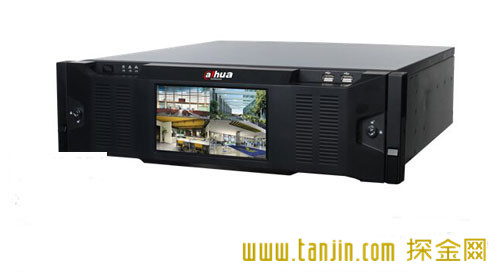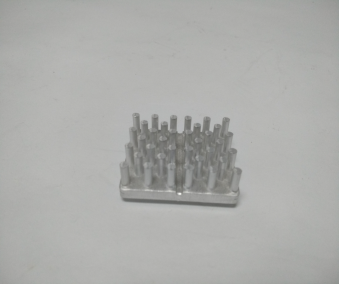At present, the security monitoring requirements for storage can be simply summarized as "five highs": 1. High-capacity: High-speed storage increases storage capacity, requiring stable and reliable large-capacity storage: Increasing the capacity of a single system: Cascading multiple JBODs through SAS expansion, supporting 3TB, 4TB hard disks, enhancing RAID robustness, and using clusters Storage System: Enhances the elastic expansion capability of the storage system to make up for the lack of reliability 2. High performance: High-definition monitoring requires high total storage bandwidth, and storage performance should be optimized based on the monitoring characteristics: Performance optimization: high-definition large stream high concurrent data stream, different modes (while writing while reading, deleting edges Write, RAID reconstruction) IO performance optimization, NAS performance optimization, application integration: NVR software embedded application processing capabilities, rational allocation of system resources; 3, high energy efficiency: Behind the deployment of mass storage is a lot of energy consumption, high cost of use, monitoring equipment should be low-power design: In the DVR era, monitoring manufacturers reduce power consumption through the hard disk, prolong life, and network storage You can use MAID to achieve energy savings, but MAID is more suitable for backup archiving environments; considering that monitoring applications are 7*24 uninterrupted, selecting a high conversion efficiency power supply (80Plus power supply or DC power supply) is more valuable, without affecting Reduce energy consumption in the application case; 4. High-density: The most basic requirement for monitoring storage is to reduce the cost per TB and the cost per slot: After the popularization of high-definition monitoring, the original 3U16 bay-level equipment has limited storage capacity, and high-bay storage can support more cameras. 4U24 high-density storage, can effectively reduce the cost per slot, increase the storage capacity of a single unit, save rack space; 5, high application: storage must be designed for monitoring the actual needs of customers to solve the pain points to survive: excessive file fragmentation leads to performance degradation, file system vulnerability after a power outage, streaming media direct write, efficient index structure; improve NVR embedding Convenience and compatibility of applications, supporting Windows/Linux software, providing APIs for interfacing with external monitoring subsystems, realizing efficient analysis, and rapid positioning in mass data; taking UTV's SV1000G2 as an example, from the product design Five high, adopt end-to-end SAS6Gb technology, Intel's latest SandyBridge platform to improve performance, 4U24/4U36 high-density design, support 3TB hard drive, improve single-system storage capacity, reduce the cost per slot; applicable conversion efficiency 90's 80Plus power supply can save more power and reduce system operating costs; through framework optimization can be more closely integrated with the monitoring system. 4KNVR powerful The physical resolution of the 4KNVR image reached 3840×2160, which is 4 times that of 1080P and about 9 times that of 720P. Therefore, the biggest benefit of 4KNVR is that it can directly access 4KIPC and then output 4K images to 4K display devices through local decoding, providing a higher-definition video browsing experience. In addition, even without 4KIPC, 4KNVR has significant significance. We know that the four 1080P images are about 800w pixels in total. After the picture is composited and displayed by the ordinary NVR, the four 1080PIPC images will be compressed into one 1080P physical resolution image, about 200W pixels, and the image is clear. The degree will be greatly reduced, but if using 4KNVR, each 1080P front-end image can be decoded without loss by 4KNVR and display output to 4K display, to maximize restore 1080P HD image. In addition to higher resolution, 4KNVR will also have an important impact on the application of smart and big data. Intelligent applications as an important direction for the future development of NVR, including video real-time analysis, video intelligent abstraction and retrieval, etc., higher video clarity will undoubtedly help improve the accuracy of NVR in these smart applications.
A heat sink is a device that incorporates a fan or another mechanism to reduce the temperature of a hardware component (e.g., processor). There are two heat sink types: active and passive. The picture is an example of a heat sink with both active and passive cooling mechanisms.
More services we offer:
Product description:
Mosfet Heatsink,Aluminum Alloy Mosfet Heatsink,1000W Mosfet Heatsink,High Voltage Mosfet Timeplex Industrial Limited , https://www.catimeplexhk.com
Besides of Metal Stamping Components,the Amplifiers metel chassises and Panels, we also complete solution for OEM/ODM Products & components, offer services of deep drawing services, EMI metal shielding parts, heat sink ,plastic molding products for custom, PVC fittings ,pvc conduit fittings, Plastic Injection Components, Metal Stamping Parts, home appliances accessories ,R/C drone and smart electronic toys etc.

The material used partly determines the extent of thermal conductivity. Copper and aluminum are the most widely used materials, though aluminum is the more common choice because copper is more expensive and heavier. Aluminum 6061 and 6063 are widely used with a thermal resistance of 166 and 201 W / mK, respectively.